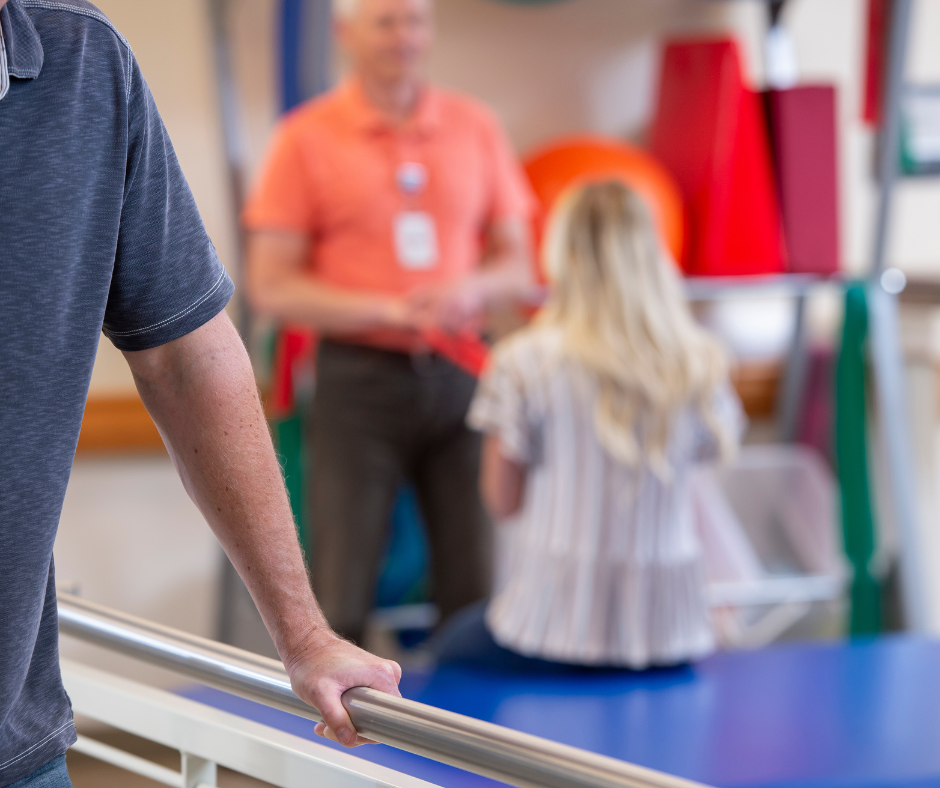
The Role of Physical Therapy in Recovery
Whether recovering from surgery, an injury, or a chronic condition, physical therapy (PT) plays a crucial role in helping patients regain their independence and quality of life. At Cameron Hospital, our physical therapists provide personalized treatment plans that promote healing, reduce pain, and restore function.
Physical therapy is more than just exercises—it’s a comprehensive approach to recovery that focuses on movement, strength, flexibility, and balance. We met with Cameron’s Rehab team to learn about the key benefits of physical therapy in recovery. It is commonly recommended for:
- Post-Surgical Rehabilitation – Helps patients regain mobility and strength after procedures like joint replacements or spinal surgeries.
- Injury Recovery – Aids in healing from sports injuries, fractures, soft tissue damage, and more.
- Neurological Conditions
- Chronic Pain Management – Reduces discomfort associated with conditions like arthritis or fibromyalgia.
- Fall Prevention & Balance Improvement – Helps older adults and those with vestibular disorders regain confidence in movement.
Key Benefits of Physical Therapy
1. Restoring Mobility and Strength
After an injury or surgery, muscles and joints can become stiff and weak. Physical therapists design targeted exercises to improve range of motion and build muscle strength, allowing patients to move more freely and with less pain.
2. Reducing Pain Without Medication
PT incorporates techniques such as manual therapy, ultrasound, electrical stimulation, and therapeutic exercises to alleviate pain naturally, reducing the need for long-term medication use.
3. Preventing Re-Injury
By improving posture, body mechanics, and movement patterns, physical therapy helps prevent future injuries. Patients learn proper techniques for daily activities, reducing strain on vulnerable areas.
4. Personalizing Treatment for Faster Recovery
Every patient’s recovery journey is unique. Physical therapists tailor exercises and treatments to specific needs, ensuring a customized approach that maximizes results.
5. Boosting Confidence and Independence
Regaining movement and strength can greatly improve confidence and mental well-being. Patients often find that physical therapy empowers them to return to daily activities, work, and hobbies with renewed energy.
A typical PT session may include:
- Evaluation & Goal Setting – Assessing movement, pain levels, and setting recovery goals.
- Stretching & Strengthening Exercises – Tailored routines to improve flexibility and muscle strength.
- Hands-On Therapy – Techniques such as joint mobilization and soft tissue massage to aid in recovery.
- Balance & Coordination Training – Exercises to improve stability and prevent falls.
- Patient Education – Teaching proper body mechanics, posture, and exercises to perform at home to sustain progress.
Our expert therapists at Cameron are here to support your journey to recovery, helping you move better, feel stronger, and live pain-free.
©2025 Cameron Memorial Community Hospital
416 E. Maumee Street, Angola, IN 46703

Recent Comments